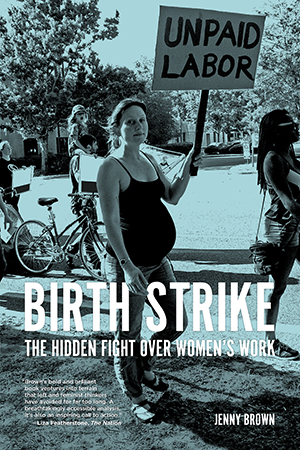By Patrick A. Coleman
Fatherly
June 20th, 2019
The Great Recession isn’t over. Want proof? Look no further than the American fertility rate
New research is shining a light on the not-so-long but very steady decline of the American fertility rate. According to a study published in the journal Demography, Americans may be having fewer children than at any other time in history due to the decline in manufacturing jobs in the wake of the Great Recession. This insight bolsters the argument that private and public divestment from American families in the form of falling wages and failing programs has made Americans of child-having age reluctant to make the leap. This so-called birth strike (a term popularized by author and activist Jenny Brown) is real — a product of economic reversal likely to lead to the broader consolidation of the domestic economy.
American fertility rates hit an all-time low of 1,728 births per 1,000 women in 2018, well below the “replacement rate” of 2,100 births per 1,000 women. That means that Americans aren’t having enough kids to keep the population stable (immigration is obviously part of population stability as well, but that has also been trending down despite presidential pronouncements to the contrary). A decline in population means fewer workers and consumers.
The decline, which started in the early 1990s, has long been understood to have been exacerbated by the Great Recession. After all, fertility rates tend to decline when the economy is troubled. But the trend here is unusual. Fertility rates historically rebound as the economy improves. That hasn’t happened since 2008.
These findings track with historical data. During the post-World War II years, manufacturing helped build the middle class. That was thanks in part to the fact that manufacturing jobs paid well and could be acquired with only a high school diploma. Also, workers in manufacturing jobs were usually represented by Unions. In the late 50s, in fact, over 30 percent of American workers were in a union.
Union membership allowed workers to bargain for family wages that allowed one parent to stay home and raise children. And the fact those children could find a good job without attending college meant that parents did not have to invest an inordinate amount of time, energy and money into their child’s schooling and enrichment activities.
Seltzers findings suggest that the reason fertility rates have not rebounded is that parents no longer see a clear path to the middle class for their children. Now that the success of a child is connected to higher education, parenting is more expensive and more time-consuming. Meanwhile, support for parents is shrinking. The upshot is that having children has begun to feel like the uphill battle it has become for anyone working a blue collar job. There are simply too many costs and too few guarantees for it to make sense for American workers to have 2.1 children a pop.
The dwindling birth rate, known to activists and sociologists focused on the economics of parenting as the “birth strike” because of its potential long term effects on employers, shows no sign of changing even as the employment rate nears all-time lows. Given that, it’s highly unlikely that trends will change until policies do or until new avenues towards the middle class are opened.







